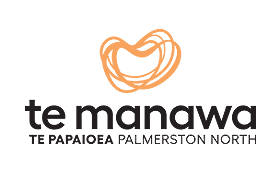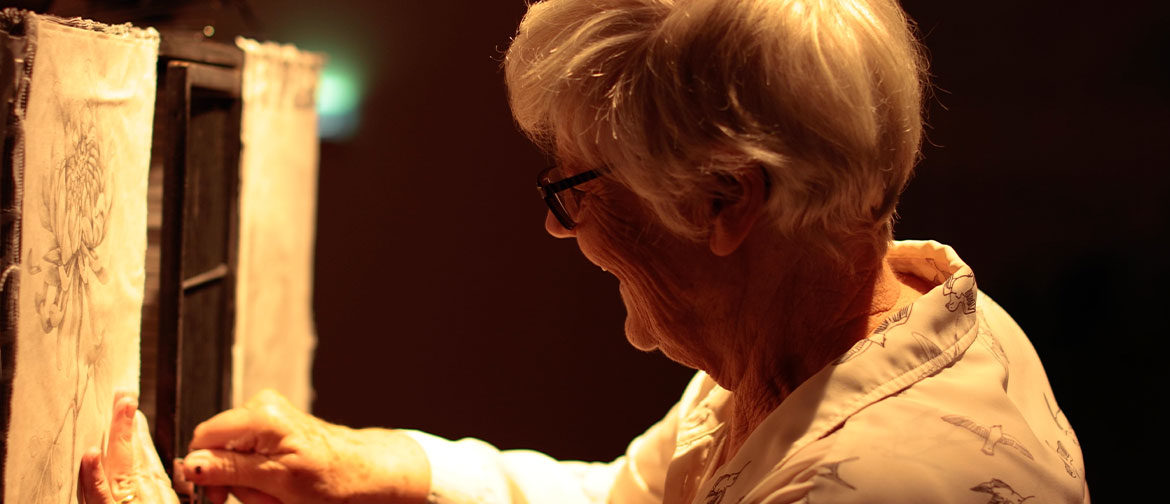Te Manawa: You’ve got two works here; the pods, do they represent metamorphosis?
M.E.: Yes they do. That’s a good word. How we can grow even though we’ve come from really horrendous beginnings. We might not grow how we expect, but we can still grow and learn. But it’s also about my spiritual journey, the growth of that as well. My drawings around the pods, I’ve kept them really basic, and I’ve done them deliberately in pencil because I don’t like the colour: the drawings – the graphite – represents the idea that we don’t have to have all this stuff surrounding us. We can still live life quietly, it doesn’t have to have all the junk around it.
Karen: It’s like you’re filtering out this clean, pure, beautiful voice, and that’s what your pencil drawings do so well, I think. They’re really evocative and I think there’s that essence of what you’re seeing in them rather than distracting with things like colour.
M.E.: I portray a lot of children, because children are like this tiny little seed that you can make into something gnarled and bitter, but you can also make this child into something so beautiful and giving, natural and loving.
Karen: There’s an innocence about some of your drawings, and that’s something that’s really important if you’ve been in a space of violence, acknowledging that innocent child that is there. It’s powerful and the pencil drawings do it so beautifully.
M.E.: I also put a lot of fauna around it because that’s my happy space, and I guess that’s where a lot of people are happy, out in the open where you can actually breathe. Again, coming back to the seed – always back to the seed – what we plant in our minds is what we become.
Te Manawa: What drew you to such a large-scale work?
M.E.: I’m a painter normally, and I draw small. First of all it was a major challenge for me, one that I wouldn’t usually take up, but I thought, this time, yeah, I’ve got a voice and I need to speak it. It comes back to what the other women were saying: when you stand in front of someone’s artwork, you don’t have to be told a lot about that work. It’s what you make of it, it’s what your heart speaks. What I hope to do with my artwork is to tell a story. Normally it’s my story, but it can become someone else’s story too. If they stand in front of my artwork and get the story that I’m telling, and it helps them, then I’ve done a good job. I love the idea of the big pieces where people can actually walk around and get the whole story – it’s not just a canvas.
Karen: It makes you physically engaged. Sometimes when you walk up to a flat work on a wall, your only option is to stand in front of it, whereas with these works you physically engage with them, you can walk around them, you look at them from different spaces.
M.E.: And you’re actually coming into the story.
Karen: And the cords really add to the sense that there’s something really beautiful and organic and natural. When I first met you, you were doing lots of drawings of animals, but you’ve been with us the whole way through, and your style has shifted, your voice has shifted.
M.E.: When I first started out with my artwork, I held in a lot. I was scared to actually let anything out because of people’s perceptions of me – “oh here’s this lady and she’s all cool, calm and collected” – but underneath it’s just fire and brimstone! [laughs] But each time I came to WAI, it allowed me to take a step out of who I was and let me see who I could become, and who I could help along the way with my art. I think that’s what I’ve done: I’ve allowed people to have their own voice.
Karen: And you’ve let out that fire and brimstone and it’s awesome! We love it! I think that fight and that sense of justice is what drives a lot of our artwork at WAI. It’s really powerful when you let that stuff channel into something that makes a difference.
M.E.: And at WAI too, the most amazing thing was being able to bounce off each other. To encourage and actually be reborn.
Te Manawa: And what about your other piece? A lot of people will find that very relatable.
M.E.: The idea of that was how – again, coming back to the idea of how we’re moulded while we’re children – how our thoughts repress us, how they hold us down. If you look in the cage there’s actually a doll, and she’s in the nest, and has her treasure with her. The idea is that – you see at the top where the cage is open – she’s coming out, she’s being reborn. And again, my drawings around it are showing that, all the treasures that we hold dear, but we hold in because of who we become through abuse, or even just being told who we should be.
Karen: It’s not who you are, it’s who you’ve been acclimatised to become. Violence limits you. I think what we’re doing as a collective is allowing each other to be who we are.




